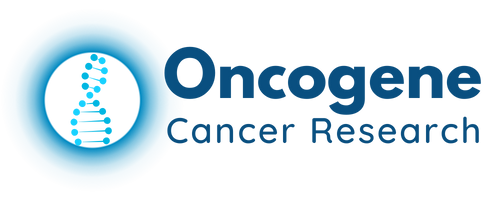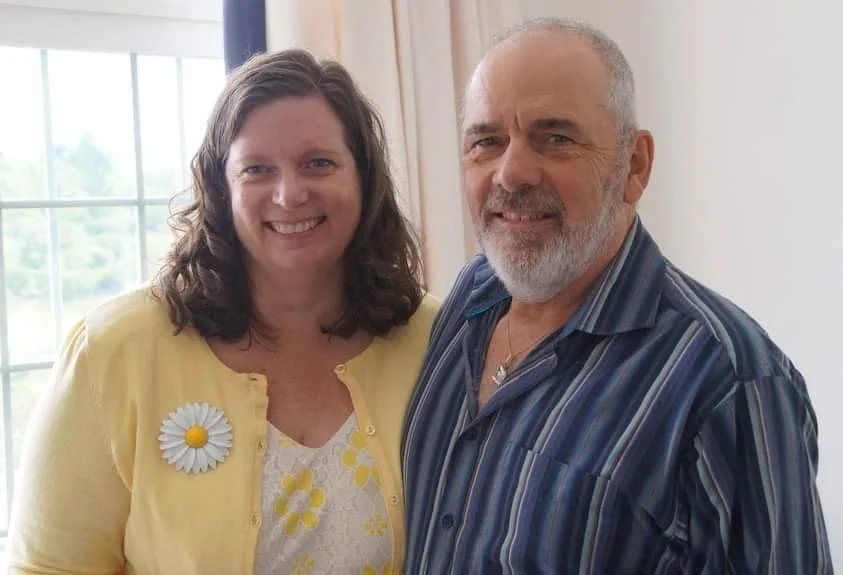Patient stories.

You might have saved my life by making me go to the emergency room
Retired military skydiver Michael lived with large cell lung cancer just over two years.
After discovering a rare STK11 mutation, his wife embarked on a quest for answers, fuelling her advocacy to honour his memory and advocate for others.
Michael’s legacy.
Sharp rib pain led to Michael’s aggressive lung cancer diagnosis.
When 66-year-old Michael, from Kingston, Ontario, Canada, felt a stabbing, "pulled muscle" sensation in his ribs in late May 2020, he wasn't worried. The retired military skydiver and veteran had finished successful radiation treatment for throat cancer just over a year earlier and was being monitored every three months with no sign of recurrence. His wife Christine, considerably younger, had taken early retirement six months before his throat cancer diagnosis. While it wasn't how they had pictured their post-career life, they were grateful they could spend unlimited time together, even with Michael’s very curable cancer.
There’s always hope.
Living for over 15 years on a large country property, Michael was an active gardener and jack-of-all-trades – a lifelong survivor and daredevil often oblivious to the constant minor injuries from his daily activities: a broken finger here, a scalp gouge there. When the rib pain returned just weeks later in early June, Christine suggested a trip to the emergency department in case he had cracked or broken a rib—a likely scenario given Michael's tendency to climb tall structures and carry heavy loads.
It was early in the pandemic, so Christine was forced to wait at home while Michael drove into town for what they assumed would be a routine examination and X-ray.
The discovery
There was indeed an X-ray, but Michael called Christine from the hospital to say he would be delayed. "I don't want you to worry, but they've found a mass in my lung and they need to do a CT-scan."
Christine managed to hold it together during the phone call, and Michael promised to call again before driving home. When the ER doctor returned with the scan results and said bluntly, "I'm very sorry, but you have lung cancer." Michael decided he needed to wait until he got home to tell his wife of 22 years in person.
Following regional lung cancer protocols, Michael was referred for a PET-scan and brain MRI in the weeks that followed. The good news: they saw no other visible evidence of cancer in his body – quite rare in lung cancer patients, who are often not diagnosed until stage IV.
Next came the crucial question: was this a new primary lung cancer unrelated to his throat cancer, or had the earlier cancer spread to his lung? Two difficult biopsies and a bronchoscopy later – while Christine waited in the park next to the COVID-restricted hospital – Michael was officially diagnosed with a new primary cancer. It was large-cell lung cancer, a rare and aggressive form of the disease.
Despite the scary feeling that lung cancer evoked in them both, they were encouraged to hear that due to Michael's early diagnosis and fitness, doctors felt it was "possibly curable" through surgery.
"You might have saved my life by making me go to the ER," Michael told Christine gratefully. They both hoped his habits of making the first snow angel of the season (despite there being no children in the house) and stamping hearts in the snow for Christine (despite over two decades of marriage) would continue for years to come.
From hopeful to heart breaking: journey to stage IV
In September, Michael underwent a successful left upper lobectomy, removing the tumour and most of his left lung. Never a fan of hospitals, he checked himself out by day three and came home with 48 staples and a chest tube hole that Christine found slightly alarming when changing his dressings.
Recovering steadily, Michael was characteristically back on their roof helping a roofer during week four post-surgery, despite clutching his side while climbing the ladder and nailing shingles.
Unfortunately, pathology showed cancer in one lymph node, so Michael was scheduled for four rounds of chemotherapy starting in November. Just weeks in, his rib pain returned. "Probably a pulled muscle," he was told when reporting the pain at appointments, as doctors felt nothing abnormal when examining his ribs.
A post-chemotherapy scan in February 2021 revealed the painful truth: the pain was radiating from a metastasis where his eighth rib joined his spine. Despite this being the only metastasis outside the lungs, Michael's lung cancer was now stage IV.
The power of research
Given the small number of large-cell lung cancer patients worldwide, there is very little research and no targeted treatment available. Michael's tumour had been tested but showed no actionable genetic markers. "We're going to throw everything at it," his oncologists said.
And throw everything they did. Between November 2020 and June 2022, Michael underwent three rounds of chemotherapy, nine rounds of immunotherapy, and 13 rounds of palliative (ie non-curative) radiation to combat his increasingly severe pain. He participated in a clinical trial, then endured five more rounds of radiation for pain management, followed by three rounds of a different chemotherapy regimen.
Christine and Michael felt extremely fortunate to live in Canada with socialized healthcare. Despite the many expensive treatments Michael endured, it cost the couple nothing except time, parking, and gas money.
Michael felt grateful to have access to both established and novel lung cancer treatments because of research. "I just need to stay alive long enough for there to be more new treatments," he would say after each scan showed millimetres of growth, prompting his oncologist to change treatments until they finally ran out of options four months before his death.
The missing piece: STK11
As a writer, Christine was determined to process and capture what she and Michael experienced during his illness. After he died, she requested Michael's medical file from his family doctor. It was over 900 pages, but one page stopped her in her tracks: Michael's tumour had tested positive for the STK11 mutation – something they had never been told during his treatment and which wasn't among the common lung cancer mutations Christine had researched.
What did it mean? Would it have made a difference? At the time, their hospital system lacked an electronic patient record system, and his oncologist was not communicative. Information about Michael's disease details remained limited, despite Christine feeling she had constantly peppered the oncologist with questions.
During treatment, Christine and Michael asked, “Have you tested for markers?”— and were told yes. But in hindsight, Christine encourages patients and caregivers to dig deeper: Which markers were tested? Are there others we should know about? While some testing may come at an additional cost – even within a socialised healthcare system – they had already discussed being open to funding non-government-covered tests if they could provide valuable insights.
The STK11 discovery makes Christine wish she had asked even more questions and requested to see Michael's medical file while he was still alive.
"There's always hope"
Despite never experiencing common lung cancer symptoms like breathing problems, coughing, or fluid in his lungs, Michael spent his final four months in the hospital due to pain and paralysis caused by the tumour compressing his spinal cord.
"There's always hope," Michael told Christine one morning in late October 2022, as they held hands across his hospital bed. It wasn't the first time he had said those words, but it was the last—he died the very next morning.
A pretty good hand
Christine often cries at the unfairness of the cruel bookends of Michael's life: a childhood marked by poverty, abuse, and homelessness, followed by an extended, excruciating journey through pain in his final two years, despite having only a tiny amount of cancer in his body.
Yet despite these tragedies, Michael had written in one of his many notes: "Life has, at times, dealt me some lousy cards, but I always ended up with a pretty good hand."
Christine has found solace by channelling her cancer rage and professional skills into volunteer advocacy work. She is an advocate, speaker and writer. She focuses on trauma-informed cancer care and lung cancer – the disease that still kills far more people than any other cancer each year, yet receives proportionately low research funding due to stigma.
In this way, Christine endeavours to continue Michael's legacy and his unflinching belief that "There's always hope."
June 2025










